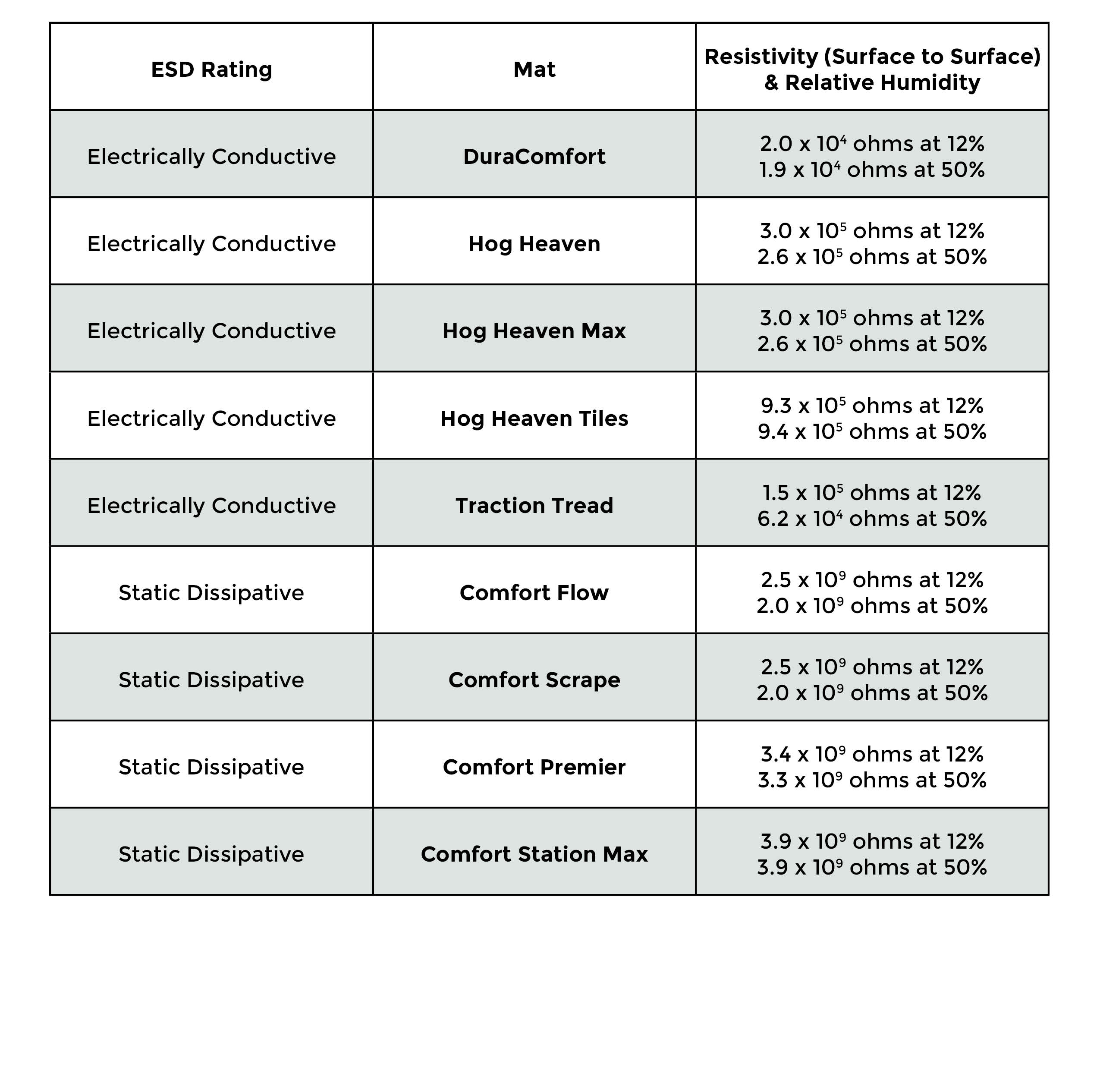ESD Matting
What is ESD?
Electrostatic discharge, also commonly referred to as ESD, happens when two electrically charged items come into contact with one another and emit a discharge of static electricity. Static electricity is the imbalance of electrical charges on the surface of an object or within the material. You've probably experienced an electrostatic discharge when pulling apart clothes that are stuck together, or when touching a doorknob after dragging your feet across a carpeted floor. This electrostatic discharge, seemingly harmless, can be problematic in highly sensitive environments. A small spark in an area that involves flammable substances can lead to a large catastrophe. A tiny electrostatic discharge that goes unnoticed to you can ruin sensitive electronics, like small circuit boards.
Since electrostatic charge is most commonly created by friction, a person walking across the floor generates the perfect scenario for those two electrically charged surfaces to emit a discharge of static electricity. Proper matting can help prevent this, but different environments require different solutions. M+A Matting offers a variety of mats designed with different surface materials to ensure the proper solution for your specific environment.
ESD ratings are based on electrical resistivity - the rate at which electricity moves through a material. The speed is measured in ohms and referred to as the “resistance” of the material. A low resistivity indicates a material that readily accepts electrical current. The lower the resistance, the more quickly static is accepted by the matting.
ESD Matting is divided into three classifications:
- Electrically Conductive is rated 101 to 105 and accepts static electricity the quickest.
- Static Dissipative is rated 106 to 109 and is the middle range of ESD matting.
- Anti-Static is rated 1010 to 1012 and accepts static the slowest.
M+A Mats are rated as follows:
Product Pages: DuraComfort, Hog Heaven, Hog Heaven Max, Hog Heaven Modular Tiles, Traction Tread, Comfort Flow, Comfort Scrape, Comfort Premier, and Comfort Station Max
Accessories
- Ground wires are used to allow static electricity to pass more efficiently to the ground and provide a controlled path. Use the cord to connect all ESD floor mats to a building ground. The terminal can be connected to an electrical outlet using the screw in the outlet cover.
- Heel grounders are made for workers wearing rubber soles and other insulating shoes. They allow static electricity to pass around the shoe into the ESD matting. Fasten the heel grounder to the heel of the shoe with the Velcro and allow the fabric strip to touch the sock or skin for best performance.
Non-Conductive Matting
An ESD rating is a measure of a mat's resistivity - the rate at which the mat resists static electricity. Mats with these ratings are designed to pull static from workers. Non-conductive matting is quite different. Non-conductive mats, commonly referred to as switchboard mats, are designed to insulate workers to protect them from deadly shock generated by high voltage equipment. Non-conductive mats create a barrier between the electrical source and ground, preventing voltage from passing through.

